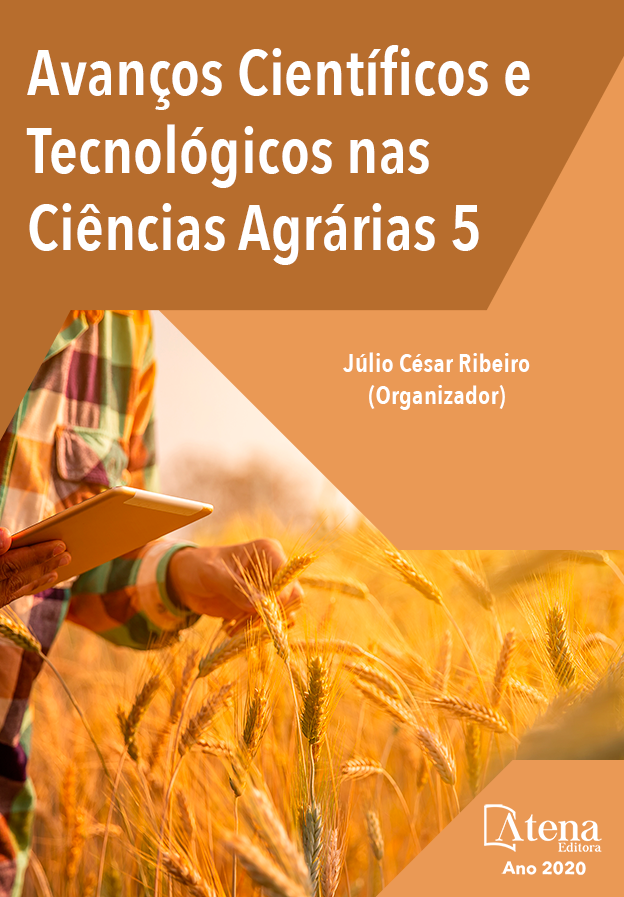
QUALIDADE FÍSICA, FISIOLÓGICA E SANITÁRIA DE SEMENTES DE AVEIA BRANCA CULTIVADA SOB DIFERENTES DOSES DE REDUTOR DE CRESCIMENTO E NITROGÊNIO
O objetivo do presente trabalho foi avaliar os efeitos de diferentes doses de redutor de crescimento e de nitrogênio na qualidade física, fisiológica e sanitária de sementes de aveia branca produzidas em área de sucessão com a cultura do milho. O experimento foi conduzido em duas partes durante o ano de 2019. A primeira parte do trabalho foi conduzido a campo no município de Augusto Pestana, RS, em um sistema de cultivo com alta relação Carbono/Nitrogênio em sucessão milho/aveia (cultivar Barbarasul). Utilizaram-se três doses de nitrogênio (30, 90 e 150 kg ha-1) e quatro doses de redutor de crescimento (0, 200, 400, 600 ml ha-1), com três repetições. O nitrogênio foi aplicado no estádio fenológico V4 (4º folha expandia) e o redutor de crescimento em V6/V7. A segunda parte foi conduzida no laboratório de analise de sementes da UNIJUI, após a colheita as amostras foram enviadas para o laboratório para a realização das análises de pureza, de germinação, de vigor (por envelhecimento acelerado) e sanidade. As doses elevadas de redutor comprometeram negativamente a pureza, a germinação e o vigor de sementes de aveia branca. O percentual de sementes puras diminuiu significativamente na dose de 30 kg de N ha-1, aumentando o percentual de outras sementes e o número de sementes de azevém. No teste de vigor, o percentual de plântulas normais diminuiu significativamente nas três doses de nitrogênio e nas doses de redutor. Em termos de sanidade, houve elevada incidência de patógenos em todas as doses de nitrogênio e redutor.
QUALIDADE FÍSICA, FISIOLÓGICA E SANITÁRIA DE SEMENTES DE AVEIA BRANCA CULTIVADA SOB DIFERENTES DOSES DE REDUTOR DE CRESCIMENTO E NITROGÊNIO
-
DOI: 10.22533/at.ed.3132028093
-
Palavras-chave: Germinação; patologia de sementes; Pureza.
-
Keywords: Germination; seed pathology; Purity.
-
Abstract:
The objective of the present work was to evaluate the effects of different doses of growth reducer and nitrogen on the physical, physiological and health quality of white oat seeds produced in succession area with corn. The experiment was conducted in two parts. The first part of the work was carried out in the field in the municipality of Augusto Pestana, RS, in a cultivation system with a high Carbon / Nitrogen ratio in succession corn / oats (cultivar Barbarasul). Three doses of nitrogen (30, 90 and 150 kg ha-1) and four doses of growth reducer (0, 200, 400, 600 ml ha-1) were used, with three replications. The nitrogen was applied in the phenological stage V4 (4th leaf expanded) and the growth reducer in V6 / V7. The second part was conducted at the UNIJUI seed analysis laboratory, after the samples were collected, they were sent to the laboratory for purity, germination, vigor (due to accelerated aging) and health analysis. The high doses of reducer negatively compromised the purity, germination and vigor of white oat seeds. The percentage of pure seeds decreased significantly at the dose of 30 kg of N ha-1, increasing the percentage of other seeds and the number of ryegrass seeds. In the vigor test, the percentage of normal seedlings decreased significantly in the three nitrogen doses and in the reducer doses. In terms of health, there was a high incidence of pathogens in all doses of nitrogen and reducing agent.
-
Número de páginas: 9
- Anael Roberto Bin
- Roberto Carbonera
- José Antônio Gonzalez Da Silva
- Adriano Udich Bester


